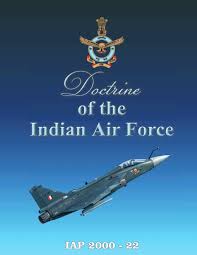CHINA’S NATIONAL STRATEGY
- The PRC’s national strategy is to achieve “the great rejuvenation of the Chinese nation” by 2049. The strategy is a determined pursuit of political, social, and military modernity to expand the PRC’s national power, perfect its governance, and revise the international order in support of the PRC’s system of governance and national The PRC views the United States as deploying a whole-of-government effort meant to contain the PRC’s rise, which presents obstacles to its national strategy.
- The PRC characterizes its view of strategic competition in terms of a rivalry among powerful nation states, as well as a clash of opposing ideological systems. PRC leaders believe that structural changes in the international system and a confrontational United States are the root causes of intensifying strategic competition between the PRC and the United States.
‒ In March 2023, Xi Jinping told delegates to the Chinese People’s Political Consultative Conference that “Western countries led by the United States have implemented comprehensive containment, encirclement and suppression against us, bringing unprecedented severe challenges to our country’s development.”
- The PRC’s strategy entails deliberate and determined efforts to amass, improve, and harness the internal and external elements of national power that will place the PRC in a “leading position” in an enduring competition between systems.
- In the 20th Party Congress Political Work Report, the CCP expanded on its calls to prepare for an increasingly turbulent international climate, while reporting it had “enhanced” the PRC’s security on all fronts and “withstood political, economic, ideological, and natural risks, challenges, and trials.”
FOREIGN POLICY
- The PRC’s foreign policy seeks to build a “community of common destiny” that supports its strategy to realize “the great rejuvenation of the Chinese ” The PRC’s ambition to reshape the international order derives from the objectives of its national strategy and the Party’s political and governing systems.
- Beginning late 2022 Beijing launched a diplomatic ‘charm offensive’ targeting European countries in an apparent effort to improve perceptions of Beijing following years of ‘wolf warrior’ diplomacy and COVID isolation.
- In April 2022, Xi Jinping announced the Global Security Initiative (GSI). Echoing the previous year’s rollout of the Global Development Initiative (GDI), Beijing has promoted GSI extensively and attempted to insert GSI language into multilateral forums and documents.
- Russia’s war on Ukraine in February 2022 represented a major, unexpected challenge for the PRC as it sought to react to the largest military conflict in Europe since the end of World War. As Beijing deliberates the scale and scope of materiel commitments to Russia’s war on Ukraine, it probably will seek to balance its strategic partnership with Russia while avoiding reputational or economic costs that could result from its assistance.
ECONOMIC POLICY
- At the end of 2022, China abruptly reversed its zero-COVID The decision to implement China’s reopening took most by surprise and was probably triggered by country-wide protests against the PRC’s zero-COVID policies, economic pressures, and fiscal difficulties for local governments.
- The 20th Party Congress emphasized the importance of quality growth rather than the speed of growth. General Secretary Xi also highlighted “common prosperity,” more equitable access to basic public services, a better multi-tiered social security system, and cultural and green developments as a few of the PRC’s economic initiatives.
- The PRC’s ongoing military modernization objectives are commensurate with and part of China’s broader national development aspirations.
CHINA’S BELT AND ROAD INITIATIVE (BRI)
- The PRC uses BRI to support its strategy of national rejuvenation by seeking to expand global transportation and trade linkages to support its development and deepen its economic integration with nations along its periphery and beyond.
- In 2022, BRI projects saw mixed economic outcomes, experiencing both growth and decline. However, overall spending on BRI projects remained consistent with the previous year and Beijing continued to prioritize public health, digital infrastructure, and green energy.
- Overseas development and security interests under BRI will drive the PRC towards expanding its overseas security relationships and presence to protect those interests.
MILITARY-CIVIL FUSION (MCF) DEVELOPMENT STRATEGY
- The PRC pursues its Military-Civil Fusion (MCF) (军民融合) Development Strategy to “fuse” its security and development strategies into its Integrated National Strategic System and Capabilities in support of China’s national rejuvenation goals.
- The PRC’s MCF strategy includes objectives to develop and acquire advanced dual-use technology for military purposes and deepen reform of the national defense science and technology industries and serves a broader purpose to strengthen all of the PRC’s instruments of national power.
- Since early 2022, the CCP appears to have been deemphasizing the term “Military Civil Fusion” in public, in favor of “integrated national strategic systems and capabilities.”
COMING UP: DETAILED ANALYSIS WITH INDIAN PERSPECTIVE
Suggestions and value additions are most welcome
For regular updates, please register here
References and credits
To all the online sites and channels.
Disclaimer:
Information and data included in the blog are for educational & non-commercial purposes only and have been carefully adapted, excerpted, or edited from sources deemed reliable and accurate. All copyrighted material belongs to respective owners and is provided only for purposes of wider dissemination.


